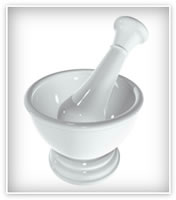
3790 Arapaho Rd
Addison, TX 75001
214-390-3371
214-377-9558 (Fax)
800-370-1910 (Toll Free)
Compounding is the mixing of drugs by a pharmacist, physician, or veterinarian to fit the unique needs of a patient. This may be done for medically necessary reasons, such as to change the form of the medication from a solid pill to a liquid, to avoid a non-essential ingredient that the patient is allergic to, or to obtain the exact dose needed. It may also be done for voluntary reasons, such as adding favorite flavors to a medication.
History
Before mass production of medications became normal, compounding was a routine activity among pharmacists. Community pharmacists who have experience with compounding techniques are now less common.
The art of pharmaceutical compounding has ancient roots. Hunter-gatherer societies had some knowledge of the medicinal properties of the animals, plants, molds, fungus and bacteria as well as inorganic minerals within their environment. Ancient civilizations utilized pharmaceutical compounding for religion, grooming, keeping the healthy well, treating the ill and preparing the dead. These ancient compounders produced the first oils from plants and animals. They discovered poisons and the antidotes. They made ointments for wounded patients as well as perfumes for customers.
The earliest druggists were familiar with various natural substances and their uses. These drug artisans compounded a variety of preparations such as medications, dyes, incense, perfumes, ceremonial compounds, preservatives and cosmetics. Drug compounders seeking gold and the fountain of youth drove the Alchemy movement. Alchemy eventually contributed to the creation of modern pharmacy and the principles of pharmacy compounding. In the medieval Islamic world in particular, Muslim pharmacists and chemists developed advanced methods of compounding drugs.
The modern age of pharmacy compounding began in the 19th century with the isolation of various compounds from coal tar for the purpose of producing synthetic dyes. From this one natural product came the earliest antibacterial sulfa drugs, phenolic compounds made famous by Joseph Lister, and plastics.
During the 1800s, pharmacists specialized in the raising, preparation and compounding of crude drugs. Crude drugs, like opium, are from natural sources and usually contain multiple chemical compounds. The compounding pharmacist often extracted these crude drugs using water or alcohol to form extracts, concoctions and decoctions.
Pharmacists began isolating and identifying the active ingredients contained within these crude drug concoctions. Using fractionation or recrystallization, the compounding pharmacist would separate the active ingredients, like morphine, and use it in place of the crude drug. During this time modern medicine began.
With the isolation of medications from the “raw materials” or crude drugs came the birth of the modern pharmaceutical company. Pharmacists were trained to compound the preparations made by the drug companies, but they were unable to do it efficiently on a small scale. So economies of scale, not lack of skill or knowledge, produced a market for the modern pharmaceutical drug companies (Pharma).
With the turn of the 20th century came greater government regulation of the practice of medicine. These new regulations forced the drug companies to prove that any new medication they brought to market was safe. With the discovery of penicillin, modern marketing techniques and brand promotion, the drug manufacturing industry came of age. Pharmacists continued to compound most prescriptions until the early 1950s when the majority of dispensed drugs came directly from the large pharmaceutical companies.
In the community pharmacy
Physicians may prescribe an individually compounded medication for a patient with an unusual health need. This allows the physician to tailor a prescription to each individual. Compounding preparations are especially prevalent for:
• Patients requiring limited dosage strengths, such as a very small dose for infants
• Patients requiring a different formulation, such as turning a pill into a liquid or transdermal gel for people who can’t swallow pills due to disability
• Patients requiring an allergen-free medication, such as one without gluten or colored dyes
• Patients who need drugs that have been discontinued by pharmaceutical manufacturers because of low profitability
• Patients who are taking bioidentical hormone replacement therapy, specifically the Wiley Protocol
• Children who want flavored additives in liquid drugs, usually so that the medication tastes like candy or fruit
• Veterinary medicine, for a change in dose, change to a more easily-administered form (such as from a pill to a liquid or transdermal gel), or to add a flavor more palatable to the animal.